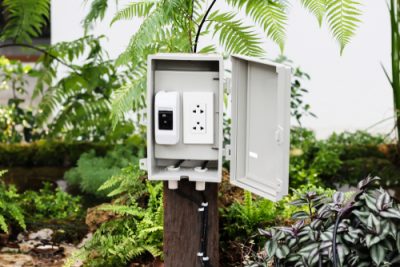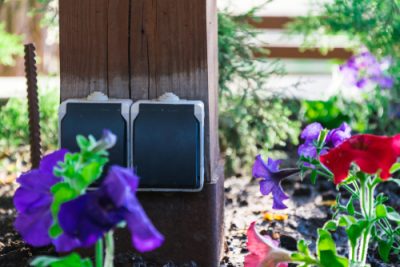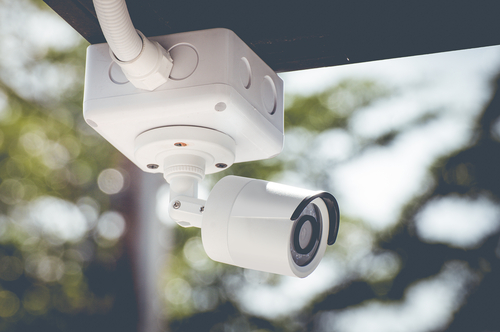If you’re building an electronic device to be used outside, you may need to invest in tough
outdoor enclosures that will protect the internal components and keep them safe from the ravages of wind, rain, sunlight and extreme temperatures. When choosing a weatherproof enclosure, you need to consider which option is best for your device. Whether you’re building a unit from the ground up or using enclosures to protect an existing home security system or other device, it helps to know a little bit about enclosure specifications.Not all outdoor enclosures are the same. They have different features and ratings that make them appropriate for specific applications. Before you choose an outdoor enclosure, you should determine the requirements of your project so that you know what features are necessary. The biggest things to consider are location and environment. Where your electronics are placed makes a big difference when shopping for enclosures.
Starting with the Basics: Always Choose Weatherproof
No matter how mild the environment, the weather outside will have an impact on the components inside the box. Rust, moisture, heat and UV rays can significantly worsen how well your electronics perform, but the right enclosure can protect them. Therefore, for outdoor installations, you should always choose an electronics enclosure that’s weatherproof. You may need to learn more about specific weather ratings to ensure that your enclosure will protect electronic components in your climate. To find the right solution, it’s helpful to start with a basic understanding of NEMA ratings.
Understanding NEMA Ratings
The National Electrical Manufacturers Association (NEMA) sets the standards for the design, production and distribution of products designed for national and international use. Their standards protect the user as well as the manufacturer and ensures that the enclosures are safe and reliable. Products are rated according to how they are built, what materials they are made of and how well they protect components from environmental conditions.NEMA ratings set a measurable standard for electrical and electronics enclosures, categorizing enclosure types according to their ability to protect components against liquids, dust and corrosive chemicals. Therefore, you should really select an
outdoor NEMA enclosure that’s rated to handle whatever you expect to be thrown at it. Examples include:
- Types 3R, 3RX: Protection against falling dirt, rain, sleet and snow; also protects against damage due to external ice formation. These enclosures are also made to be rust-resistant.
- Types 4, 4X: Watertight, dust-tight and sleet-resistant. Indoor or outdoor use. They also provide protection against splashing and hose-directed water and NEMA 4x enclosures are also corrosion-resistant.
- Types 6, 6P: Protects against hose-directed water and prolonged submersion in water at limited depths. Undamaged by the external formation of ice.
 IP Codes
IP Codes
IP codes are similar to NEMA ratings in that they specify levels of protection for electrical enclosures. IP codes contain a two-digit number:
- The first digit (ranging from 0 to 6) describes the degree of protection the outdoor weatherproof box provides against solid objects.
- The second digit (ranging from 0 to 9) describes the degree of protection the enclosure provides against liquids.
Here are some examples of IP codes:
- IP10: Enclosures provide a degree of protection to people against incidental contact with the enclosed equipment and a degree of protection against falling dirt.
- Since the first digit (1) is considered a lower level, objects in an enclosure with this degree of protection can only be protected against foreign solids of 50mm in diameter and greater. An example of how effective this protection level would be is when the back of a hand touches a case unintentionally. However, objects will not be protected against any deliberate contact to the enclosure.
- With the second digit being 0, objects have virtually no protection against liquids such as water since 0 is considered the lowest protection level.
- IP56: Enclosures provide a degree of protection to personnel against incidental contact with the enclosed equipment, a degree of protection against falling dirt, along with a degree of protection against windblown dust, rain, sleet and snow.
- With 5 as the first digit, the level of protection against solids is relatively high and an object in this enclosure type with this protection level will be protected completely from deliberate contact, while being relatively protected from dust (in small amounts.)
- 6 is considered a higher level of protection against liquids, so objects will be protected from any form of liquid contact with the case, even contact as powerful as water jets.
Although you can determine the IP code based on the NEMA rating, you can’t identify the NEMA rating based on the IP code. NEMA ratings go beyond merely describing the protection an enclosure provides against water. They also indicate the level of protection against elements such as ice, rust, corrosion or oil. IP does not provide this information.When determining requirements for an outdoor enclosure, you should view both the NEMA and IP codes. If they both meet your minimum requirements, then the enclosure is acceptable to use. Also, make sure the codes in question are specific to outdoor use, not indoor use.
 Security Requirements for Outdoor NEMA Enclosures
Security Requirements for Outdoor NEMA Enclosures
Since outdoor electrical wiring and other components do present a safety or security risk, you may need to purchase
waterproof NEMA enclosures that protect the contents from unauthorized access.For instance, if you have a low-risk installation, you may need to protect the parts with a simple screw-on cover, lift-off cover or a single-door cover that is shut tight using clamps. In high-risk situations, you may need to implement an outdoor NEMA enclosure that contains a locking mechanism.
Thermal Management for Your Outdoor Weatherproof Box
The outdoor enclosures must be able to dissipate the heat that the components produce inside the box. Too much heat over long periods can cause the box to deteriorate at an accelerated rate.
Excessive heat can cause electrical overloads and trip the wiring system. Heat can also cause circuit breakers, fuses or outlets to shut down. To avoid these problems, you may need a solution that comes with a cooling system or you may install a bigger enclosure so that the heat is not compressed.
Consider Your Surroundings Before Installing an Outdoor Enclosure
Although we’ve already discussed the effects of the elements on outdoor NEMA enclosures, your particular unit may not be affected by all the elements. For instance, you may install an enclosure that could be exposed to water moisture, but is protected from the sun because it’s placed under a cover. Alternatively, you may need to install the enclosure in an area where heavy snow and high winds can occur. Your surroundings should determine what type of enclosure you implement to keep your electronics safe in an outdoor setting.
Order Your Outdoor Enclosures from Polycase
Polycase manufactures innovative electronic enclosures for both residential and commercial properties. We provide exceptional products combined with superior customer service. To find out more about our electronic products,
contact us today!

 IP Codes
IP Codes Security Requirements for Outdoor NEMA Enclosures
Security Requirements for Outdoor NEMA Enclosures